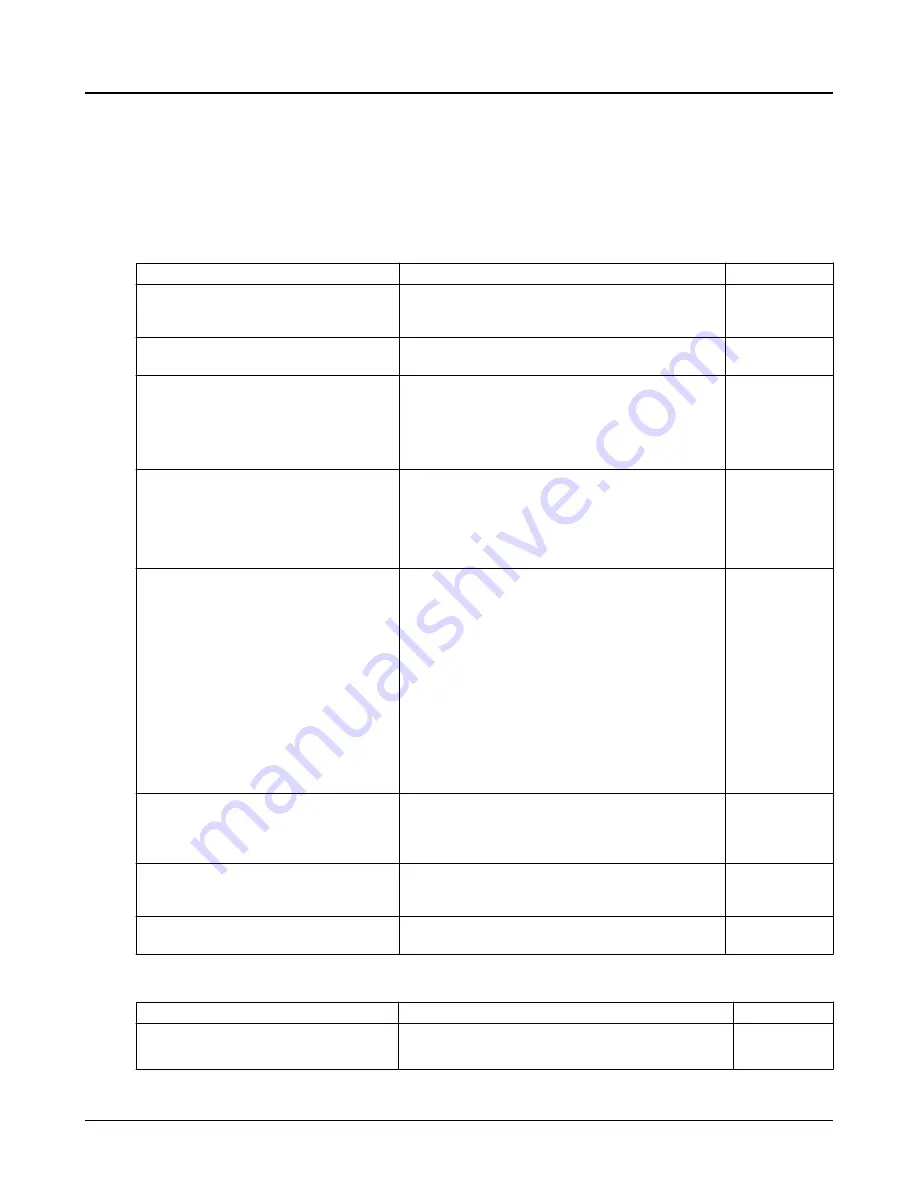
4.5.3 Suction-piping checklist
Performance curve reference
Net positive suction head available (NPSH
A
) must always exceed NPSH required (NPSH
R
) as shown on
the published performance curve of the pump.
Suction-piping checks
Check
Explanation/comment
Checked
Check that the distance between the inlet
flange of the pump and the closest elbow
is at least two pipe diameters.
This minimizes the risk of cavitation in the suction in-
let of the pump due to turbulence.
Check that elbows in general do not have
sharp bends.
—
Check that the suction piping is one or two
sizes larger than the suction inlet of the
pump.
Install an eccentric reducer between the
pump inlet and the suction piping.
The suction piping must never have a smaller diame-
ter than the suction inlet of the pump.
Check that the eccentric reducer at the
suction flange of the pump has the follow-
ing properties:
•
Sloping side down
•
Horizontal side at the top
Suggested suction strainers are used.
Check that they are at least three times the
area of the suction piping.
Monitor the pressure drop across the suc-
tion strainer.
An increased pressure drop across the
strainer of 34.5 kPa | 5 psi indicates that
the strainer should be removed and
cleaned.
After a period of time (24 hours minimum)
system flushing should be complete and
the suction strainer can be removed.
Suction strainers help to prevent debris from entering
the pump.
Mesh holes with a minimum diameter of 1.6 mm |
1/16 in. are recommended.
Liquids with specific gravity less than 0.60 a pressure
drop across the suction strainer may be due to ice
buildup. Ice buildup can cause turbulence, low pres-
sure areas and pumpage vaporization.
If more than one pump operates from the
same liquid source, check that separate
suction-piping lines are used for each
pump.
This recommendation helps you to achieve a higher
pump performance and prevent vapor locking espe-
cially with specific gravity of liquid less than 0.60.
If necessary, make sure that the suction
piping includes a drain valve and that it is
correctly installed.
—
Assure adequate insulation is applied for
liquids with specific gravity less than 0.60.
To assure sufficient NPSHa.
Liquid source below the pump
Check
Explanation/comment
Checked
Make sure that the suction piping is free
from air pockets.
This helps to prevent the occurrence of air and cavita-
tion in the pump inlet.
4.5 Piping checklists
Model 3355 Installation, Operation, and Maintenance Manual
33
















































